|
TRANSLATE THIS ARTICLE
Integral World: Exploring Theories of Everything
An independent forum for a critical discussion of the integral philosophy of Ken Wilber
 David Christopher Lane, Ph.D.
Professor of Philosophy, Mt. San Antonio College Lecturer in Religious Studies, California State University, Long Beach Author of Exposing Cults: When the Skeptical Mind Confronts the Mystical (New York and London: Garland Publishers, 1994) and The Radhasoami Tradition: A Critical History of Guru Succession (New York and London: Garland Publishers, 1992). David Christopher Lane, Ph.D.
Professor of Philosophy, Mt. San Antonio College Lecturer in Religious Studies, California State University, Long Beach Author of Exposing Cults: When the Skeptical Mind Confronts the Mystical (New York and London: Garland Publishers, 1994) and The Radhasoami Tradition: A Critical History of Guru Succession (New York and London: Garland Publishers, 1992).If there's a singular topic Integral students need to be educated on it is evolutionary theory, given their frequent but uninformed use of the term "evolution". These short biographical chapters about evolutionary theorists have been written by different philosophy students of professor David Christopher Lane. (FV)
THE EVOLUTIONARY SCIENTISTS
Glimpses into the Life and Work of Great Thinkers in Evolutionary Biology
Coyne|
Crick|
Darwin|
Dawkins|
Diamond|
Dobzhansky|
Eldridge|
Gould|
Haldane|
Hamilton |
Lamarck|
Lovelock|
Mayr|
Mendel|
Monod|
Spencer|
Trivers |
Wallace |
Weismann |
Williams |
E.O. Wilson
Alfred Russel WallaceJun AhnFew individuals rise from the subpar conditions that Alfred Russel Wallace was born into and achieve scientific greatness. From a family of 9 children, the 8th grew to become one of the greatest philosophers of the natural world. That child was Wallace; his contributions to the “Theory of Evolution by Natural Selection,” predating that of Charles Darwin's published work, will live on to be some of the greatest works of natural philosophy ever published. 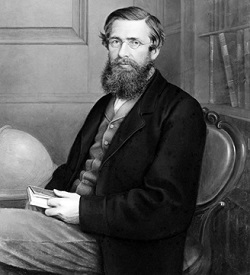 Alfred Russel Wallace Alfred Russel Wallace was born on January 8, 1823. The 2nd-to-youngest of a pack of 9 children, Wallace was raised by his mother and father: Thomas Vere Wallace and Mary Anne Greenell. The Wallace household never went beyond middle-class; Wallace had many business ventures but failed in most. His investments went nowhere, and his entrepreneurship led to the family's poor financial conditions. Eventually, Wallace was withdrawn from the Hertford Grammar School in London. He attended for only 6 years, yet his enthusiasm for education never wavered; he began to scour the many books around his home, some of which piqued his interest in gardening. As Wallace grew up, his interest grew towards the natural world. But to his parents' dismay, he also grew a dislike towards religion. His interests grew as he attended school at the London Mechanics Institute. Wallace left London for an apprenticeship with his older brother William in 1837. In a journal published in the Geologica Belgica, journalist Greg F. Gunnell writes: “Unlike Darwin, who was a man of family means, Wallace was born into a relatively poor family. His work as an apprentice surveyor… afforded him the opportunity to be outside where he developed his love of nature and began a lifelong passion for collecting natural history specimens. In fact, Wallace's main enticement for traveling to South American and Southeast Asia fit well with his fascination with nature—he was destined to make his living collecting samples of exotic plants and animals that were to be sold in Great Britain.” As if destined, Wallace's early years were leading up to his deep and prolonged interest in the natural world. After his brief moments of unemployment and his short career as a civil engineer, Wallace went aboard the Mischief, heading off into the Amazon rainforest. Suffice to say, from this time onwards Wallace remained employed for the rest of his life as a naturalist. Alfred Russel Wallace contributed to the body of philosophy through his theory of evolution by natural selection. After going through layers of biogeographical research, the naturalist found his answer deep in the Malay Archipelago. In My Life, Wallace's autobiography, the philosopher writes: “At the time in question I was suffering from a sharp attack of intermittent fever… One day something brought to my recollection Malthus's “Principles of Population”… I thought of his clear exposition of "the positive checks to increase"—disease, accidents, war, and famine—which keep down the population of savage races to so much lower an average than that of more civilized peoples. It then occurred to me that these causes or their equivalents are continually acting in the case of animals also… it occurred to me to ask the question, Why do some die and some live? And the answer was clearly, that on the whole the best fitted live.” It is intriguing that his discovery on natural selection was discovered at a time of serious illness. In letters written between Charles Darwin and Alfred Russel Wallace, the two shared similar thoughts regarding evolution. Later on, Wallace requested that Darwin review an essay for him in 1858, which was titled, “On the Tendency of Varieties to Depart Indefinitely From the Original Type.” Also, within these letters was where the differing opinions of the two Enlightenment thinkers clashed. To begin, Darwin pressed on the notion that competition is a recurring theme between the relationships of individuals within the same species. To contrast, Wallace entertained the notion that it was environmental forces that pressured species to adapt and overcome their harsh living conditions. Wallace began to venture into Spiritualism in 1865. During the time he was living with his sister Fanny Sims, Wallace was introduced to this subject from her. Prior to this he was a believer of phrenology, the pseudoscience in which the mental traits of a species can be determined from the number of bumps on their skull. Suffice to say, the Enlightenment thinker was not a stranger to unusual and borderline science. He went to séances, examining the ritual and concluded that at least some of these séances had to be authentic. After disliking religion in his younger years, Wallace eventually returns to the subject with a new perspective. In the end, Wallace's interests and his contributions came from an inherent desire to learn about the natural and spiritual world. He became increasingly busy forming lectures and stories that presented his findings to the world. He began this tour at the Zoological Society of London, a research institute. This period of time was where his research truly became public and astounded scientists. Through 1864 to 1866, Wallace courted two women. The second, Annie Mitten, became his wife and they had three children named William, Herbert, and Violet. Alfred Russel Wallace died on November 7, 1913, passing away in his house at the age of 90. While his physical body died, his legacy did not. On November 1, 1915 a medallion was placed on his grave in Westminster Abbey. Further Reading1. The Supernatural Philosopher: Alfred Russel Wallace on Miracles and Skepticism, Mount San Antonio College/Philosophy Group; First edition (April 25, 2018) 2. The Malay Archipelago, National University of Singapore Press; Revised ed. edition (September 24, 2014) 3. Contributions to the Theory of Natural Selection , White Press (July 28, 2016)
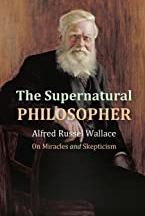 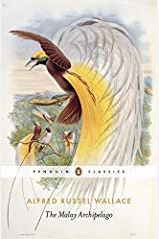 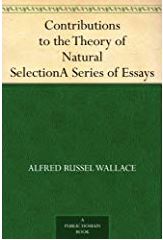
MSAC Philosophy Group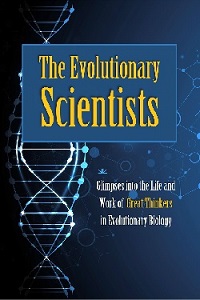
The theory of evolution has a long history. However, it was not until Charles Darwin and Alfred Russel Wallace discovered that the wide variety of species we presently see were largely the result of natural selection did evolutionary studies have a solid, scientific basis. In the past one hundred and sixty years, a number of eminent biologists have contributed to our understanding of how complex life forms emerged from simpler, more rudimentary ones. Comment Form is loading comments...
|